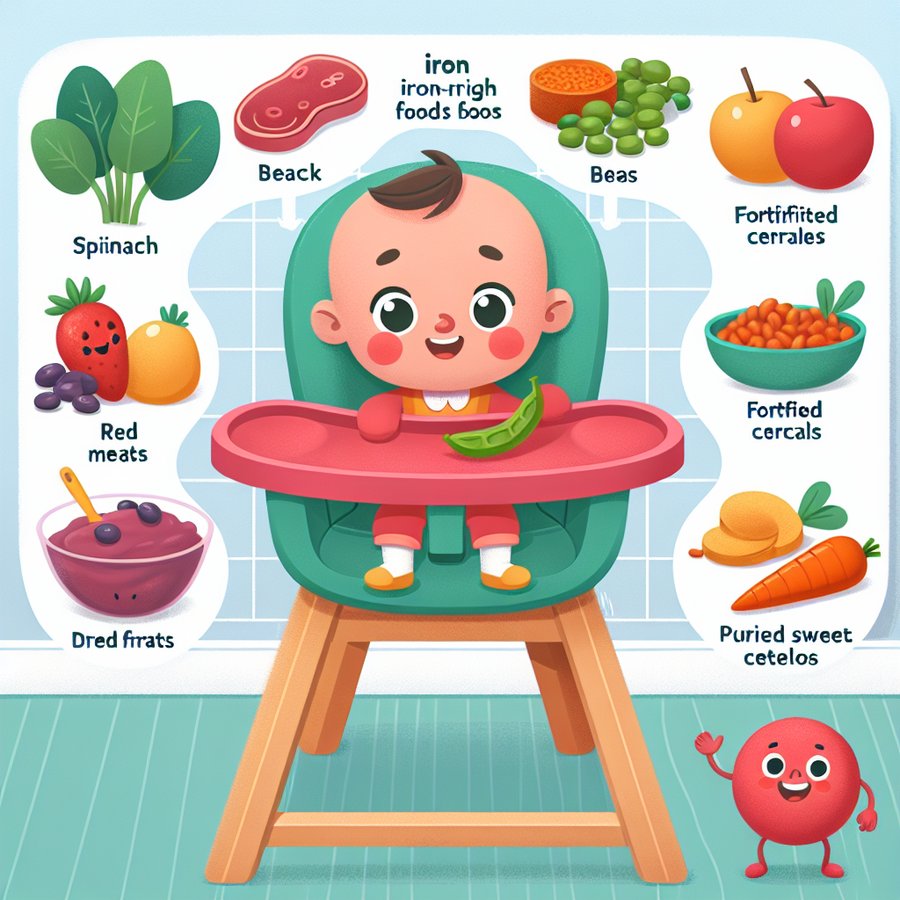Introducing Iron-Rich Foods for 6-Months-Old Anemic Infants is a crucial step in addressing and preventing iron deficiency anemia in infants. As they transition from breast milk or formula to solid foods, ensuring they receive adequate iron is vital for their development and overall health. This guide is designed to help you navigate through the best iron-rich foods suitable for your 6-month-old and provide practical tips for incorporating these into their diet effectively.
Understanding Iron Deficiency in Infants
Iron deficiency anemia is one of the most common nutritional deficiencies in infants worldwide. It can significantly impact an infant’s growth and development, leading to delayed motor skills and cognitive development. The importance of incorporating Iron-Rich Foods for 6-Months-Old Anemic Infants cannot be overstated, as it plays a pivotal role in preventing this condition.
According to the World Health Organization, infants are at a higher risk of iron deficiency due to their rapid growth and the limited iron stores with which they are born. This makes it imperative for parents and caregivers to introduce iron-rich solid foods at about 6 months of age. (WHO)
Top Iron-Rich Foods for 6-Months-Old Anemic Infants
When it comes to enhancing your infant’s iron intake, certain foods are especially beneficial. These include pureed meats, such as beef and chicken, which are high in heme iron, the form of iron most easily absorbed by the body. Additionally, fortified cereals and legumes, like lentils and chickpeas, offer ample amounts of non-heme iron.
It’s also essential to include vitamin C-rich foods in your infant’s diet to enhance iron absorption. Foods such as oranges, strawberries, bell peppers, and broccoli can be pureed or offered in small, manageable pieces for your baby to explore and enjoy. Combining these with iron-rich foods can significantly boost iron absorption, aiding in the prevention and treatment of anemia. For more detailed information on introducing solids, consider reading How to Introduce Solid Foods to a 6-Month-Old Baby with Allergies.
Incorporating Iron-Rich Foods into Your Baby’s Diet
Introducing iron-rich foods to your infant requires a bit of creativity and patience. Start with single-ingredient purees to monitor for any potential allergic reactions. Gradually, you can combine different iron-rich foods into delicious and nutritious meals. For instance, mixing pureed meat with a bit of vegetable puree not only enhances flavor but also incorporates additional vitamins and minerals necessary for your baby’s growth.
Remember, the texture of the food is just as important as its nutritional content. As your baby becomes more accustomed to solid foods, you can gradually introduce more texture to help develop their chewing skills. For ideas on preparing age-appropriate meals, visit Introducing Texture in Baby Food: When and How.
Preventing Iron Deficiency: Beyond Diet
While diet plays a crucial role in preventing iron deficiency anemia, other factors also contribute to your infant’s iron status. Exclusive breastfeeding for the first 6 months, followed by the introduction of iron-rich solid foods, is recommended. For infants who are formula-fed, choosing an iron-fortified formula is essential to meet their iron needs.
Regular check-ups with your pediatrician are vital to monitor your infant’s iron levels and overall health. If you suspect your child may be anemic, it is crucial to seek medical advice promptly to address the issue and prevent long-term complications. For tips on balancing solid food and milk intake, read Balancing Solid Food and Milk Intake for 9-Month-Olds.
In conclusion, addressing and preventing iron deficiency anemia in 6-months-old infants involves a multifaceted approach that includes introducing Iron-Rich Foods for 6-Months-Old Anemic Infants, ensuring proper nutritional balance, and regular pediatric check-ups. By following these guidelines, you can help ensure your infant’s development and overall health are on the right track.













